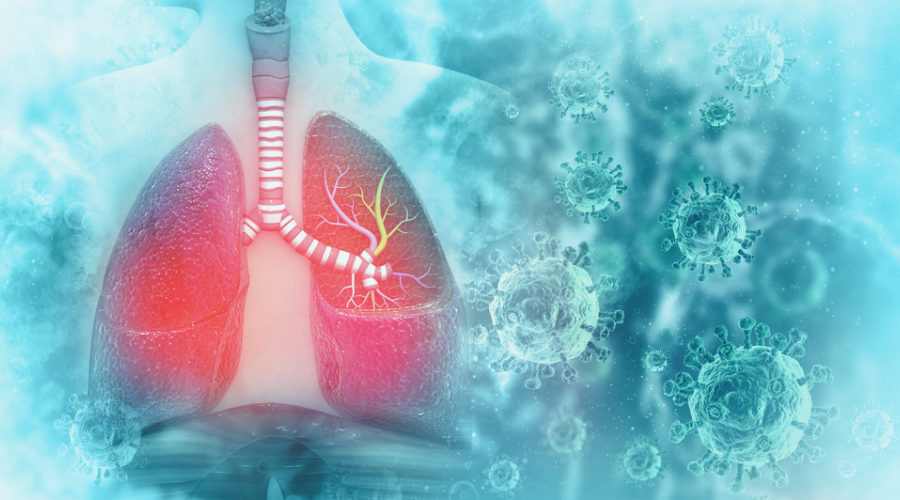
Microbiome May Hold Secrets to Surviving Infections After Chemotherapy
Bone marrow transplant (also called HCT) is a lifesaving treatment for children with conditions like leukemia and sickle-cell disease. But the treatment is grueling. Doctors use strong chemotherapy to wipe out diseased cells in the bone marrow before transferring healthy stem cells into the child’s body. The chemotherapy weakens the child’s immune system and opens a vulnerability to infections.
As children recover from a bone marrow transplant, nearly half contract a potentially deadly lung infection. New insights into the lung microbiome of these patients reveal a way to improve their chance of a successful recovery.
The study, published in Nature Medicine, used an advanced method to rapidly identify all potentially harmful organisms in the lungs, leading to the discovery that these microbial environments are predictive of the risk of mortality for these children.
“Lung infections in pediatric bone marrow transplant patients are complex. There might be common microbes causing them, but also very rare and uncommon microbes that doctors may miss due to a lack of good clinical tests,” said first author Matt Zinter, MD, assistant professor of pediatrics at UC San Francisco.
Using samples from over 200 pediatric patients across 32 hospitals, the international research team found that children with the worst outcomes had a depleted lung microbiome with fewer species overall, but pockets of certain harmful bacteria and viruses.
“Our ultimate goal is to figure out how to better modulate the lung microbiome to give our patients the best chance of survival after a bone marrow transplant,” said Zinter.
Finding All Potential Causes
“Children who acquire an infection after a bone marrow transplant are among the sickest children that are seen in a children’s hospital. Once their lungs become weak enough to require ventilators, mortality rates approach 50%,” said Zinter, who conducts research in the laboratory of Chan Zuckerberg Biohub San Francisco President Joseph DeRisi, PhD, senior author of the study and professor of biochemistry and biophysics at UCSF.
While culturing and other traditional methods target specific organisms, the research team obtained fluid from the lungs and used a technique called metagenomic next-generation sequencing (mNGS) to detect every type of microorganism present. This unbiased approach means that doctors don’t need to guess which harmful organisms to test for, and they receive information about the overall condition of the patient’s lung microbiome.
When the researchers uploaded the resulting sequencing data to Chan Zuckerberg ID, a free, cloud-based metagenomic platform, they found several unexpected microorganisms besides common bacteria and viruses, including fungi, amoeba from soil, and even a parasite found in cat feces.
Hope for Improved Treatments
The researchers used the microbiome composition of the patients’ lungs to separate them into four clusters and gauge the severity of infection for each group. The more abnormal the immune environment in the lungs, the worse the outcomes were for the children.
“There’s a delicate balance between the microbiome blossoming so big that it represents infection or contracting to the point that it’s depleted and non-existent,” said Zinter. “It’s like the Goldilocks analogy — the middle ground seems to be just right.”
The healthiest group had a balanced level of microbes and activity from immune cells. The other groups showed imbalances, with either too many organisms, too few, or the wrong kind, leading to worse infections and lung damage.
Zinter sees many such difficult cases of complex lung injury as program director for Pediatric Immunocompromised Critical Care at UCSF Benioff Children’s Hospitals, where he collaborates with experts across UCSF to best care for high-risk children with disrupted immune systems, including those who are recovering from a bone marrow transplant.
“We hope the comprehensive information this test can provide about lung health will lead us to more targeted and less toxic treatments for these children,” said Zinter.
